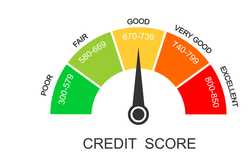How to Reduce Taxable Income: 7 Ways

Our evaluations and opinions are not influenced by our advertising relationships, but we may earn a commission from our partners’ links. This content is created by TIME Stamped, under TIME’s direction and produced in accordance with TIME’s editorial guidelines and overseen by TIME’s editorial staff. Learn more about it.
Income tax is often Americans’ largest expense each year. And due to tiered tax brackets and a progressive tax system—the more you make, the more you might end up paying.
But there are many ways to lower your taxable income—and ultimately—the amount of taxes you pay. We’ve sifted through hundreds of tax deductions and credits to showcase which ones offer the biggest impact with the least amount of effort.
Saving for retirement is always a good idea, and it’s made even better using tax-advantaged retirement accounts. Here are the two main ways to save for retirement and earn a tax deduction:
Workplace retirement account. If your workplace offers a retirement account, you can invest directly from your paycheck. With a traditional 401(k) or similar account, your contributions are deductible up to $23,000 as of 2024. If you're age 50 or older, you can contribute an additional $7,500.
Traditional IRA. Individual retirement accounts (IRAs) allow you to invest for retirement outside of a workplace account while lowering taxable income. For 2024, you can deduct contributions into a traditional IRA up to $7,000 per year or up to $8,000 if you're 50 or older. IRAs also allow you to deduct contributions until the following calendar year’s tax-filing deadline, giving you a few extra months to max out tax savings.
Paying for college or other higher education expenses can lower your tax bill. The American Opportunity Tax Credit is available to qualified students who are enrolled in a degree or recognized credential program.
You can get a matching tax credit for the first $2,000 spent on qualified expenses, then 25% of the next $2,000 spent—up to $2,500 total. This dollar-for-dollar reduction to your federal income tax bill can have a much bigger impact than a simple tax deduction.
Saving for college in a tax-advantaged account can lower your state tax bill. The most common type is the 529 plan, a type of college savings account administered state-by-state. While not deductible on federal taxes, some states also offer deductions and tax credits. This can significantly lower your state tax burden, depending on the plan chosen and your state’s laws.
Most 529 plans allow you to invest contributions, and your funds grow tax-free at a state and federal level. Withdrawals from 529 accounts are also tax-free when used for qualified education expenses.
If you anticipate out-of-pocket healthcare expenses, these accounts allow you to deduct contributions and reduce your taxable income.
Health Savings Account (HSA). Health savings accounts (HSAs) let you save on taxes while putting aside money for upcoming medical expenses. You must be enrolled in an eligible High Deduction Health Plan (HDHP) to open a Health Savings Account (HSA), which many employers offer. Individuals can contribute up to $4,150 annually or $8,300 to a qualified family healthcare plan. This lowers your taxable income, and if you use the funds for medical expenses, the growth and withdrawals from the account are also tax-free.
Flexible Spending Arrangement (FSA). Contrary to their name, Flexible Spending Arrangements (FSAs) are less flexible than HSA accounts. Contribute up to $3,200 annually directly from your paycheck, lowering your taxable income. But there’s a catch—you must use the funds within the calendar year or you will lose them. This makes an FSA ideal when you know the expenses you will incur within the year.
Do you drive for Uber or deliver groceries for DoorDash? Or maybe another internet side hustle earns you extra money from home.
Expenses from these types of businesses can help lower your tax bill. And since small business income is taxed at a higher rate (because you have to pay the full amount of Social Security and Medicare taxes), business deductions are even more valuable.
Some deductions you might be able to write off include:
Remember that you can only deduct expenses that are directly related to your business—and if you take the home office deduction, in most cases, the office must be used only for business purposes. (It cannot be a multi-purpose space.)
If you have expenses that add up to more than the standard deduction, it may be worth it to itemize them.).
Here are a few deductions that can be itemized:
If you’re unsure that your itemized deductions will be more than the standard deductions, adding them up is always a good idea before opting for standard.
Did you know you can get up to $7,500 in tax credits for buying an electric vehicle (EV)? The IRS is incentivizing the adoption of EVs, and certain qualifying vehicles offer up to $7,500 in federal tax credits with purchase.
And no, it doesn't have to be a Tesla. Several manufacturers offer qualifying all-electric, plug-in, hybrid, and fuel-cell EVs.
There are quite a few stipulations to qualify, so it’s a good idea to review the rules on the IRS website before making a purchase. You can also see if a specific vehicle qualifies at Fueleconomy.gov.
You have to file your taxes every year—so it’s worth it to explore ways to lower your taxable income. And the more you earn, the more taxes you pay—which can be a significant expense.
Tax credits are generally more valuable than deductions—but a good tax strategy will maximize both. If you aren’t confident, working with a licensed tax professional such as a CPA or Enrolled Agent can potentially save you hundreds (or thousands) each year.
If you want to lower the amount of taxes you pay, max out your workplace retirement account and health savings account (if eligible). A traditional workplace retirement account can lower your taxable income by up to $23,000 (or up to $30,500 if you’re age 50 or older). And maxing out your HSA contributions allows another $4,150 in tax deductions, or up to $8,300 if you’re on a family healthcare plan. Both plans combined can save you thousands over the calendar year.
The best way to reduce your taxable income with a W2 job is to invest for retirement and max out other tax-advantaged accounts. For example: Contribute up to $23,000 per year into a traditional 401(k) account or up to $30,500 if you’re 50 or older. Other options to lower federal taxes include contributing to a Health Savings Account (HSA) or an Individual Retirement Account (IRA). To lower state taxes, consider contributing to a 529 plan for your child.
Maxing out your 401(k) account is probably the easiest way to lower taxable income—potentially netting you thousands of dollars. In 2024, current 401(k) account limits allow you to contribute up to $23,000 or up to $30,500 if you’re age 50 or older.
The information presented here is created by TIME Stamped and overseen by TIME editorial staff. To learn more, see our About Us page.



